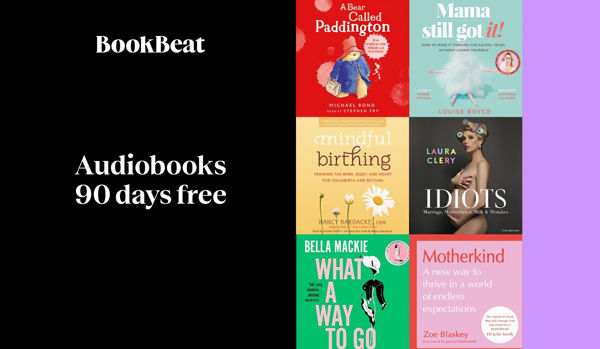It's Weaning Week! To celebrate, we've put together a little guide on what weaning is, when to do it and how to do it. The information about weaning your baby has changed over the years leaving some parents confused and not knowing what they should do. Every baby and parent is different and you need to find a way that works for your family.
As a new parent or someone who has done this before you’re constantly bombarded with information. Milestones, opinions, checks, advice (unsolicited or not) and information on most subjects at the click of a button. This can sometimes be conflicting advice and of no help when deciding what is right for your child.
[Read more: A Complete Guide to Weaning Your Baby]
What is Weaning
Weaning is just the process of introducing solid foods into your baby’s diet, alongside their milk requirements. Older family members will probably tell you that 30 years ago, babies were weaned at just a few months old.
Today though, the advice is not to start offering solids until your baby is around the 6-month mark, unless told otherwise by your health visitor or GP. At this age, their usual milk is still a vital part of their nutrition and should continue to until 12 months at least. But like we say…every baby is different and you need to trust your instincts on when it is right for your little one.
Here are some key signs to tell if your baby is ready to start their weaning journey or visit the NHS website for more information:
Your little one…
- Can sit up well without support.
- Is developing a ‘pincer’ grasp.
- Is starting to demand feeds more often.
- Is keen to participate at mealtimes and are ready or willing to chew.
- Has lost the tongue-thrust reflex and doesn’t automatically push solids out of their mouth.
- Is waking up during the night rather than sleeping through.
- High chair – your baby needs to be sitting safely and strapped in, in an upright position (so they can swallow properly)
- First cup – encourage your baby to sip water from a cup with their meals (instead of a bottle). Open cups or free-flow cups (without a valve) help your baby learn to sip and is better for their teeth
- Spoons – soft weaning spoons, usually made of rubber or plastic, are easier on your baby’s gums
- Plastic bowls – ideally the ones with a suction base, otherwise they’re likely to end up on the floor!
- Ice cube trays – very useful for batch cooking and freezing small portions
- Bibs – easy to clean plastic or pelican bibs are best in the beginning
- Messy mat – or even newspaper under the high chair, handy for messy eaters!
The Next Step
As you begin your research into this next stage of your baby’s development, you’ll no doubt hear about the different approaches to weaning such as ‘baby-led weaning’ (BLW) or ‘puréeing’.
Put simply a baby-led approach to introducing solids is where you allow the baby to feed itself. It means that food needs to be cut into chip-shaped portions so that the baby can hold it, such as cucumber sticks, tortilla, mango slices, or toast soldiers.
[Read more: When to Start Weaning]
A more traditional weaning method is puréeing, which involves spoon-feeding the baby. This requires more preparation beforehand, such as steaming and mashing softer foods.
Here are some suggestions of what you may need to get you started;
The best time of day to start the weaning process is the one that suits you both when you don’t feel rushed and your baby is not too tired. Don’t forget eating is a whole new skill - your baby may find it easy or it might take them a while! Allow plenty of time, go at your baby’s pace and stop when they show signs that they’ve had enough.
How much your baby eats depends on their appetite, so let your baby guide you on how much food they need – never force them to eat. Learn to recognise when they're hungry and when they've had enough.
It may take 10 tries or more for your baby to get used to new foods, flavours and textures. There will be days when they eat more, some when they eat less, and then days when they reject everything. Don’t worry – this is perfectly normal. Be patient and keep offering a variety of foods, even the ones they don’t seem to like, and let them get used to it in their own time.
The following things can be completely normal during weaning (and beyond);
- Acceptance of a food one day and rejecting it the next
- Refusing food for days during illness, and having a reduced appetite ‘hangover’ for several more days after that
- Changes in poo – colour, frequency, consistency, undigested pieces of food
- Playing with food a lot, but not actually eating it
- Throwing food
- Spitting food back out
- Innate preference for certain foods and less so for others
Common Food Allergens
Common food allergens are;
- Cow’s milk
- Eggs
- Foods that contain gluten, including wheat, barley & rye
- Soya
- Fish
- Shellfish
- Sesame
- Peanuts
- Tree nuts e.g. almond, pistachio, hazelnut, macadamia, pecan, cashew, brazil
Current UK department of health advice recommends that children are introduced to solids around 6 months of age. With this in mind, once the baby has got to grips with their first weaning foods such as vegetables, fruit and/or starchy foods you can begin to incorporate the foods above into their diet.
[Read more: Food Allergies in Babies and Young Children]
For babies who would be considered higher risk of developing a weaning allergy, research suggests there may be benefits to a proactive earlier introduction of these foods from 4 months of age – especially egg and peanut. Young children at higher risk of developing food allergy include;
- Babies who already have a known food allergy* e.g. Cow’s Milk Protein Allergy
- Babies with eczema, especially early-onset and/or more severe eczema
If your baby falls into one of these higher-risk groups, try to discuss with a health professional such as GP, Health Visitor, Paediatrician or Dietitian about the best time to introduce these foods. Whilst these babies are higher risk of reaction, they are also likely to benefit most when the food doesn’t cause a reaction.
Top tips for introducing allergenic foods;
- Be sure to introduce one allergen at a time – never give two or more new allergens to your baby one day
- Ensure your baby is well and not recovering from illness. If your baby has eczema, aim for the skin to be well managed/ under control
- Start with a small amount and build up gradually e.g. ¼ of a teaspoon, increasing slowly over the next few days
- Consider offering the food earlier on in the day e.g. in the morning to allow you time to monitor for any signs of a reaction during the day
- If your baby refuses the food initially don’t despair! Try again another day, or consider mixing it into a food already tolerated and accepted. Do not force feed – allow baby to go at their own pace
- Consider the best way of supporting your baby to consume the allergenic food – often parents find that a puree or mashed foods initially are easier for guaranteeing consumption of the allergen, compared to baby-led style finger food – but this depends on your baby’s skills and progress with eating
- Once you’ve successfully introduced an allergenic food it’s important to keep giving it to your baby regularly. This may be easier for some foods such as wheat which is in a number of foods, but for options like egg and peanut aim to incorporate in baby’s diet at least once per week, but ideally up to 2 or 3 times per week
[Read more: Why Weaning Has Been Bloody Miserable 2nd Time Round]
If you have any questions about weaning why don’t you join our Facebook community and Ask The Fans








